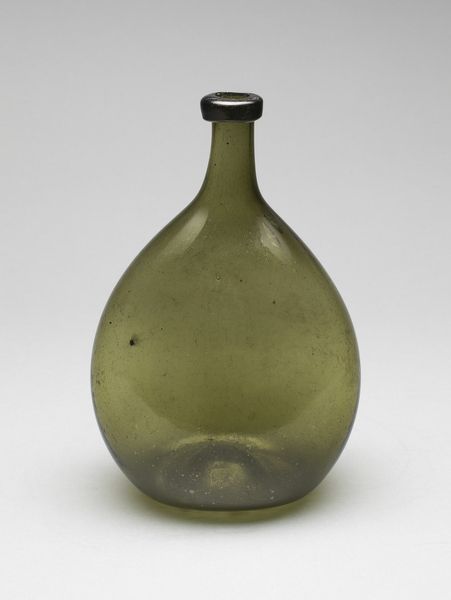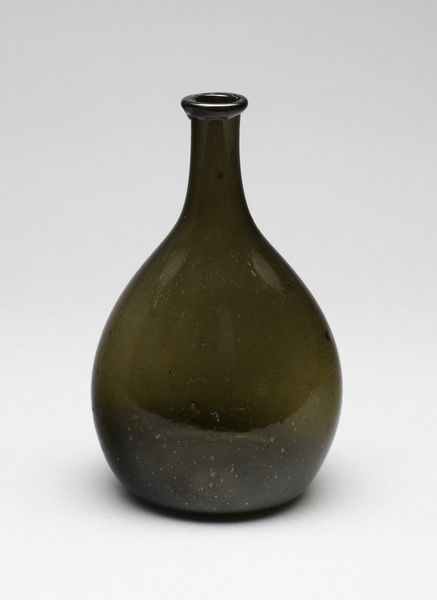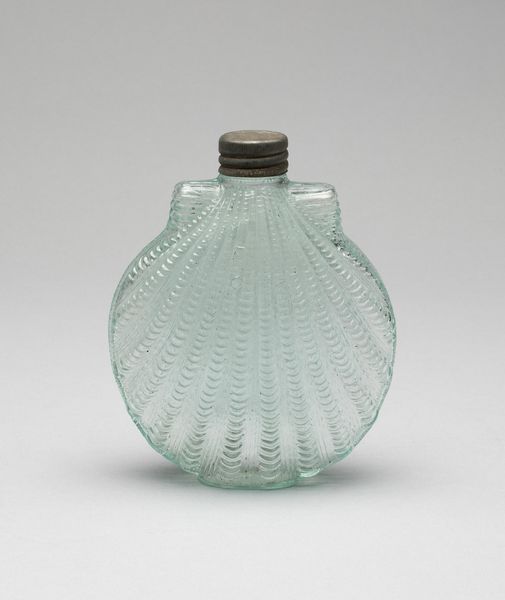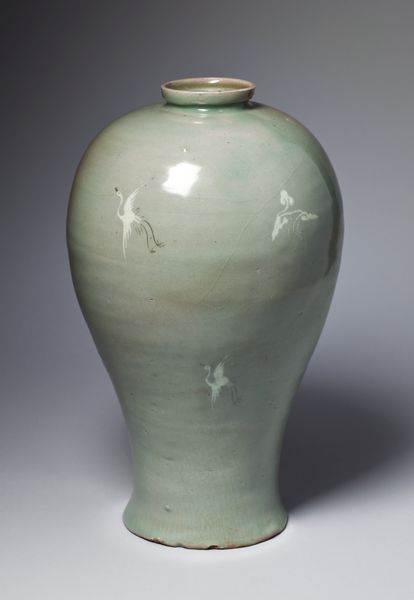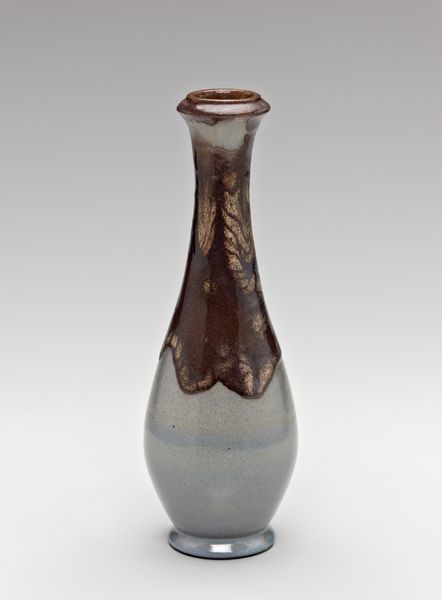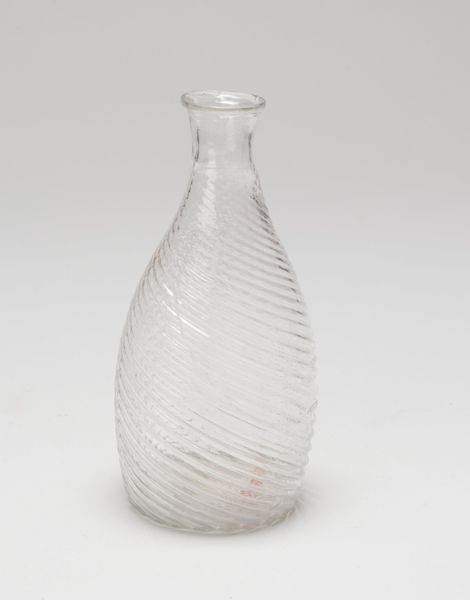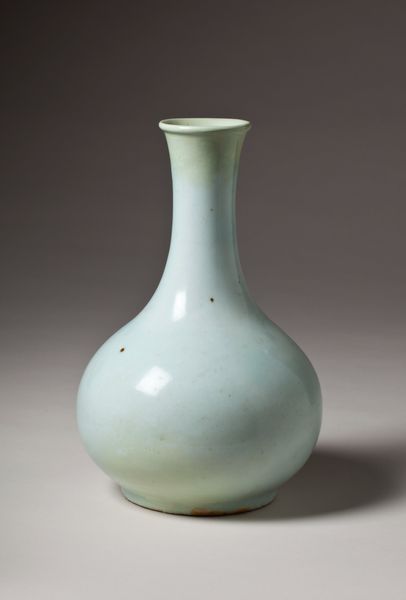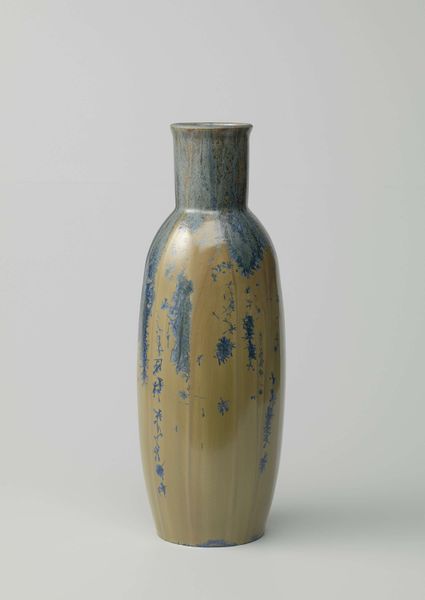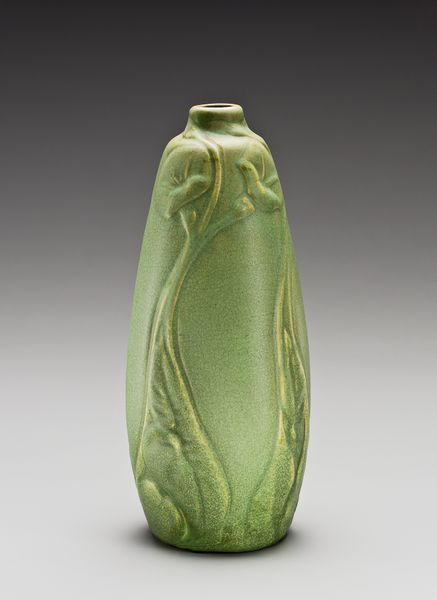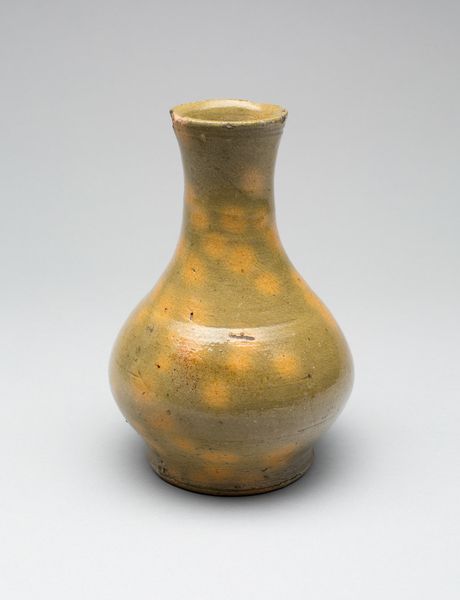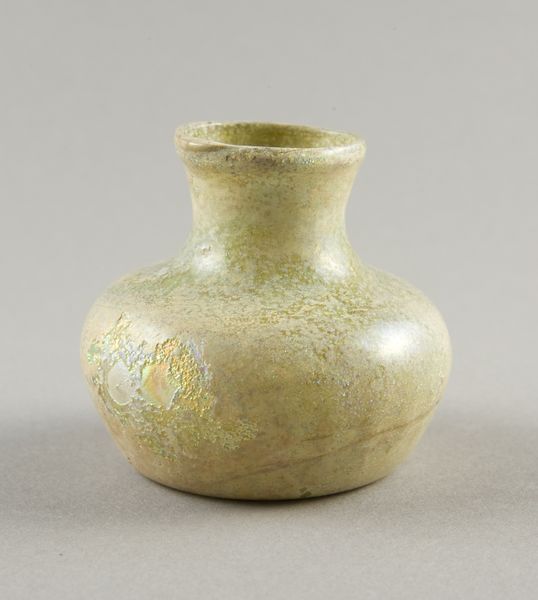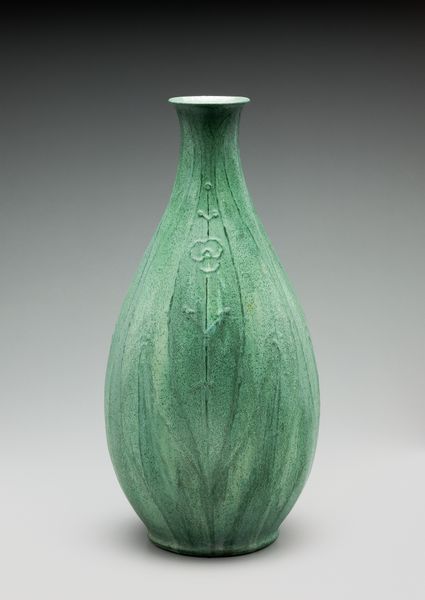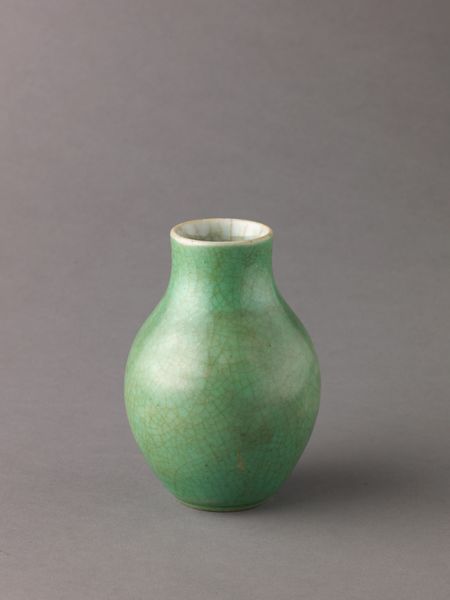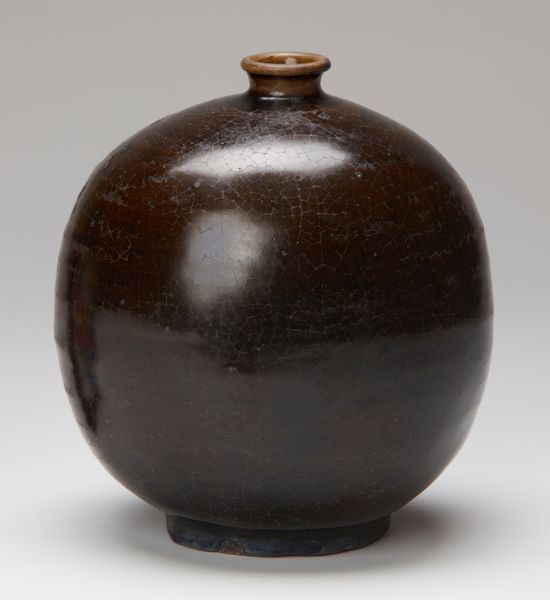
glass
#
glass
#
decorative-art
Dimensions: 13.7 × 8.2 × 5.3 cm (5 3/16 × 3 3/16 × 2 1/16 in.)
Copyright: Public Domain
Editor: Here we have an anonymous glass flask, probably dating from between 1790 and 1830. There's something about the muted green that feels utilitarian and maybe even a bit melancholic. What stands out to you when you look at this object? Curator: This flask invites us to consider the socio-economic conditions of its time. The color, likely a result of impurities in the glass, tells us about resource accessibility and the maker’s intentions. Were they working within constraints? The waves could symbolize trade routes or migration patterns. Consider who used this flask, perhaps someone involved in agriculture, medicine, or even illicit trades. How did gender roles shape the availability and purpose of this glass container? Editor: That's fascinating! I hadn’t thought about the color being indicative of social factors, and the suggestion that the waved pattern could represent trade or migration, that is very poignant, especially given it could have been an unconscious thing. It really reframes the flask as a silent witness to the past. Curator: Exactly! It's about uncovering the hidden stories and social commentary embedded in everyday objects. A piece of feminist critique could, for instance, analyse how even seemingly simple glassware influenced gendered social dynamics. How are similar dynamics alive today, albeit in different contexts? Editor: I see what you mean. By viewing something as functional as this flask, it offers insight into what it means to be people navigating society then, as opposed to now. Thanks for widening my viewpoint on this piece. Curator: My pleasure. Every object has the potential to reflect both its time and our own biases and perspectives.
Comments
No comments
Be the first to comment and join the conversation on the ultimate creative platform.
